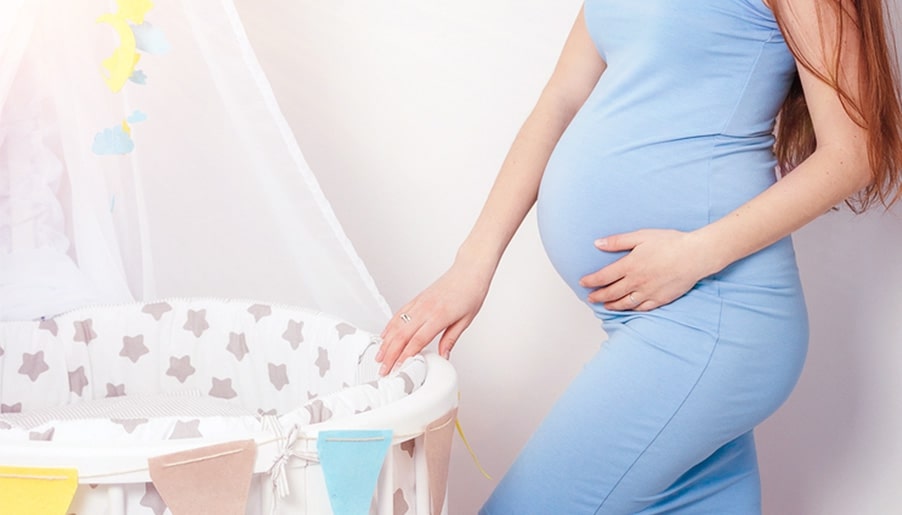
Types of childbirth: Water birth, natural birth & more
Childbirth is not just a special phase, but also a crucial period in a woman’s life. Here’s more about various ways that you can undergo a delivery and how you can best prepare for it.
There are many things that are new for a first time mum-to- be and she’s still figuring herself out even as the due date draws closer. Around this time, she is going through a surge of emotions, making crucial decisions and also taking utmost care of the new life breathing within her.
One such decision that many mums-to- be think of, or even dreads about is which birthing option to go for and the pros and cons of the available methods. The confusion is natural as many first time mums aren’t sure of what to expect and have no experience. They mostly listen to others’ stories and either take a liking for or start to dislike a specific method of bringing their baby into this world.
The various methods of delivering a baby are by and large safe and won’t have any bad impact on the health of both, the mother and the baby. However, every individual is different and hence such decisions must be taken in consultation with medical experts.
Here are some prevalent birthing options that you may want to consider:
1. Normal or Natural Birth:
Also known as the Vaginal Delivery1, this method is the natural way of childbirth via the birth canal.
There are many benefits of a natural birth2, such as,
- breastfeeding comes more easily to these mums,
- they don’t have to stay back in the clinic for long time,
- risks of major surgeries can be avoided,
- lower infection rates and quicker recoveries.
The baby born through natural birth is also at a lower risk of respiratory problems.
Enduring the pain of childbirth is a hindrance in this type of delivery. However, with advancement in the medical field, pain can be reduced using medication. Painkillers and epidurals help you deal with the pain and keep you awake enough so that you can actively do your part in the birthing process.
Having some knowledge of alternative methods of pain management can come handy and help you in your hour of need if you choose not to take painkillers.
2. Assisted Vaginal Delivery:
The Royal College of Obstetricians and Gynaecologists3 explains that Assisted or Operative Vaginal Delivery is when the baby is delivered using specially designed instruments in the last part of labour. The purpose is to facilitate birth through vagina with minimal risk to the mother and the baby.
Some of the important reasons for such intervention include:
- The baby’s movement out of the birth canal is not as normally expected.
- The wellbeing of baby during birth is a concern.
- The mum is not able to or is advised not to push during birth.
The two instruments used for an assisted delivery are a ventouse or vacuum extraction or a pair of forceps.
A ventouse or vacuum extractor uses suction. A cup that could be either soft or hard and made of plastic or metal is attached to the baby’s head. Once the mum has a contraction, she is asked to gently push while the doctors will carefully pull the baby and help the mum deliver. On the other hand, forceps, an instrument that looks like tongs, can also be used for the same purpose.
3. Caesarean Delivery:
When a normal delivery can lead to medical complications, or pose risk to the baby, at such times doctors would suggest a caesarean delivery.4 This involves a surgical process where an incision is made in the abdomen and uterus to take out the infant. The recovery time after a C-Section is longer as compared to normal deliveries. There may also be some restrictions that mums may need to follow.
Here’s when a doctor may advise5 you to undergo a Caesarean Delivery:
- If you are carrying more than one baby (for example, twins or triplets).
- If the baby is very large.
- If you have previously undergone a surgery, C-Section or face other uterine conditions.
- If the baby is not in the right position for delivery but in breech, that is, bottom first or transverse, that is, sideways position.
- If the placenta covers the cervix by being in a low position in the uterus.
- Obstructions such as fibroid, which are the tumours of the female reproductive system6.
4. Vaginal Birth After Caesarean (VBAC):
A VBAC is for second or third time mums if they have undergone a caesarean previously and are fit to go through a vaginal delivery for the second baby. With advancement in the medical field, this is possible now. However, in the past, this was only a distant dream.

5. Water Birth:
The water birth7 is an unconventional birthing option that is preferred by many pregnant mums as it provides great comfort. Here’s what will happen if you opt to deliver your baby using this method:
- Once you are in labour, the doctor will ask you to enter a tub of water and inside the tub; the condition of your unborn bub will be monitored using a doppler device.
- When you move into the final stage of labour, you have the choice to give birth while still in the water or above the water surface.
- The temperature of water is usually around 90 to 100 degrees.
- Upon coming out in the water, the baby will immediately be taken out and he or she will start breathing.
The baby has been floating in the amniotic sac for nine months and when he or she gets delivered into the water, he or she feels quite comfortable, making the entire experience an easy one for both. Some other benefits of a water birth are reducing anxiety, relaxing the muscles, allowing more freedom of movement to the mum and so on. However, in case of breech births, multiple pregnancies and medical complications, this type of delivery is not advised.
6. Hypnobirthing:
Hypnobirthing is another unconventional way of childbirth where mums are made to feel relaxed using self-hypnosis. The process8 prepares the mum for delivery on a physical, mental and spiritual level, while reducing the feelings of fear, anxiety and pain.
Some techniques generally used in the hypnobirthing process are music, visualisation, positive thinking and words to comfort the body. This method can also be used along with other ways to deliver the baby. Research suggests that hypnobirthing can be of great help when reducing labour pain.
Soon to be mums must always keep in mind that if an emergency arises, they must keep their plans aside and go by what the doctors are suggesting. Many times, pregnant mums don’t have the capacity to endure the pain during childbirth and hence some medical intervention might be needed. In such situations, you must not get disheartened, but gear up to welcome your little one in the best and safest way possible.
Apart from medical conditions, there are many factors that might lead you to choosing a certain type of delivery. So before zeroing down on any one type, it is important to take into account the following factors.
- First and foremost, it is significant to have a word with your gynaecologist and take his or her advice. They are the best to guide you about the dos and don’ts or whether or not a particular birthing method may cause any medical complications in your case.
- Read about the available options and try to get a balanced feedback about them rather than getting swayed by opinions and experiences of those around you. Identify if you are getting drawn to any of the prevalent methods.
- Involve your partner and family members in your decision as they are the ones who will support you through your delivery.
- Get an understanding of the financial aspect of various birthing options you want to consider and plan accordingly.
- Talk to other mums who have an experience and can give you unbiased advice.

Mums-to- be, the most important of all is to have a safe delivery. So, whichever way you choose to go, as long as you and your baby are healthy and happy, everything is fine.
Getting right nutrients throughout pregnancy is essential for safe birth. Read more about Wyeth’s nutrient supplement, S-26 MAMA that helps pregnant mums achieve their nutrient requirements and supports appropriate weight gain.
References:
- American Family Physician. Methods of Birth. Available at https://www.aafp.org/afp/2008/0801/p336.html. Accessed on 6 September 2017.
- Johnson Memorial. Benefits of Vaginal Delivery. Available at https://blog.johnsonmemorial.org/blog/what-type-of-birth-is-right-for-you-and-your-baby. Accessed on 6 September 2017.
- Royal College of Obstetricians and Gynaecologists. Methods of Birth. Available at https://www.rcog.org.uk/globalassets/documents/patients/patient-information-leaflets/pregnancy/pi-an-assisted-vaginal-birth-ventouse-or-forceps.pdf. Accessed on 6 September 2017
- The American College of Obstetricians and Gynaecologists. Methods of Birth. Available at https://www.acog.org/~/media/For%20Patients/faq006.pdf. Accessed on 6 September 2017.
- Johnson Memorial. Ceasarean Birth. Available at https://blog.johnsonmemorial.org/blog/what-type-of-birth-is-right-for-you-and-your-baby. Accessed on 6 September 2017.
- UCLA Obstetrics and Gynaecology. What is fibroid? Available at https://www.uclahealth.org/obgyn/default.cfm?id=1. Accessed on 6 September 2017.
- International Childbirth Education Association. Methods of Birth. Available at https://icea.org/wp-content/uploads/2016/01/Water_Birth_PP.pdf. Accessed on 6 September 2017.
- Mayo Clinic. Methods of Birth. Available at https://www.mayoclinic.org/healthy-lifestyle/labor-and-delivery/expert-answers/hypnobirthing/faq-20058353. Accessed on 6 September 2017.

